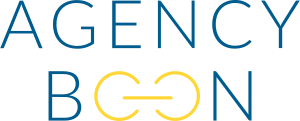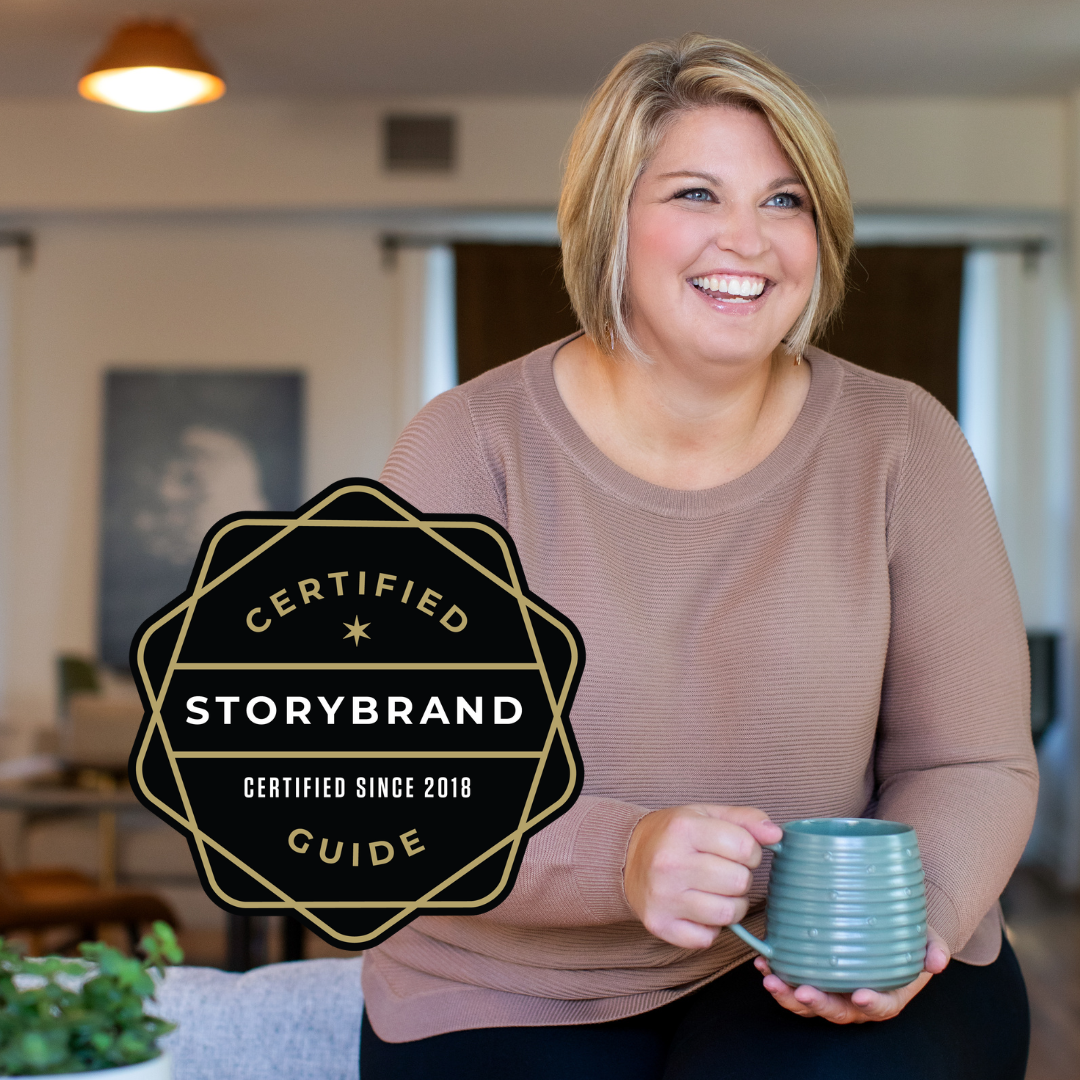Your homepage headline is the first thing people see when they come to your website. It is the phrase that determines whether they stick around and keep reading or click back to their search results for a better option. Your website headline essentially makes or breaks your potential customer’s experience with your brand. No pressure, right? No worries, these 9 tips will help you write great website headlines that capture your ideal client’s attention and compels them to take action.
What is a website headline?
A website headline is made up of the words or phrases that someone sees when they first open your website. Some people refer to this block as your website header or hero section.
The phrases “website header” and “hero section” refer to the entire block, including both text and images. Although both the design and the text on your landing page are equally important, in this post we are focusing solely on the text you use, or your headline copy.
9 Tips to Write Great Website Headlines
There is no one, infallible secret to writing effective homepage headlines. However, these 9 tips will help you create better headlines that are more likely to capture your ideal client’s attention and keep them on your website.
Tip 1: Address the customer’s pain point and your solution.
The best headlines, followed by a strong call to action, should answer these questions within seven seconds of viewing your website for the first time:
- What do you do?
- How will it solve a pain point I (your ideal client) have?
- How do I buy it?
If you can successfully answer all three questions in just a few emotionally engaging words or phrases, you’ve written a great headline.
Tip 2: Open a Story Loop
Strive to write a headline that opens a story loop in your ideal client’s brain. Show that you understand what problem they want to solve and then position your product or service as the solution. Then, the only way to close that loop and find a resolution for their desire is to buy your product or service.
You can open a story loop by asking a question, painting a picture of success, or highlighting how they will benefit from using your offering. Essentially, you want to leave your target audience wondering, “Could this product solve my problem? Is this what I need?”.
Here is a headline example from the website for Building a StoryBrand. The homepage headline says “The Book that Makes Marketing Easy”.
Your brain immediately begins to wonder if it is truly possible for marketing to be easy. It certainly doesn’t seem easy for you right now. You wonder if this book could finally solve your marketing woes and help you grow your business. Even after you’ve closed the website, you find yourself thinking maybe you should buy the book, just to see if it would work.
That is the power of a story loop. It compels you to take action because your brain deeply desires closure for that story.
Tip 3: Use words that provoke emotion.
When writing a website headline, choose words that provoke an emotional response. Donald Miller says, ”almost all companies try to sell solutions to external problems, but customers are much more motivated to resolve their inner frustrations.” When people feel an emotional response to your headline, they are more likely to take action.
In the headline example listed above from the Building a StoryBrand website, the word “easy” conveys that not only do they understand how frustrated most small business owners feel trying to figure out marketing on their own, but they’ve also found a solution. The Building a StoryBrand book can help marketing go from hard and confusing to easy.
Your catchy headline should do the same. Show that not only do you understand how your potential customer feels, but you’ve also got the solution they’ve been looking for. Scan this list of emotion-provoking words to see which words might resonate with your target audience.
Tip 4: Be clear and specific.
Clarity is key when it comes to website headlines. If you want to compel visitors to stick around and learn more about your brand, you need to be clear and specific about what you do and how you can make their lives better.
Cute, creative, and funny headlines may be attention-grabbing, but if they don’t immediately communicate what your business does, you’ll lose potential customers. A compelling headline should clearly explain the unique solution you’ve got for your target audience’s problem in as few words as possible.

Tip 5: Speak your client’s language.
If you want to reach your potential client, you have to speak like your potential client. Use the language they would use to talk about their problem. Avoid using insider language or confusing technological terms. Choose simple, clear language that anyone can understand. The most powerful headlines aren’t the ones that make businesses look smart. A headline works well when it is quickly and easily understood.
Tip 6: Don’t over promise.
Although you want to solve your ideal client’s problem, you also don’t want to make promises you can’t keep. Don’t over promise in your headline, or anywhere in your marketing. It will eat away at your credibility and the trust you are working to build with your potential customer. Only promise what you can actually deliver.
Tip 7: Write your headline last.
Engaging headlines are clear, compelling summaries of how you can solve your ideal client’s pain point. The rest of the body copy on your website elaborates on the promise, or story loop, you are opening in your website header.
Although it is a great idea to brainstorm ideas as you go, don’t make your final decision about which headline to use until you’ve got all the rest of the website copy nailed down. If you start with a catchy headline and then try to fill in the content to match, you might end up with a mismatch in messaging that will confuse your prospective clients.
Another way to avoid confusing website visitors with mismatched messaging is to complete your StoryBrand BrandScript before writing your website. This will clarify your brand’s vision to ensure you are telling the right story in a way that resonates with your ideal customer.
Tip 8: Brainstorm a lot of options.
Spend at least 10-15 minutes brainstorming website headlines. Write headlines until you can’t possibly think of any more. Try to come up with 25+ options before you settle on one. While you are brainstorming, don’t stress about the quality of your ideas. Just write down ideas. Your best idea might be the first one, or the 45th, but you have to give yourself permission to just be creative and get ideas on paper.
There are a few different angles you can take when writing headlines for your website. You could use any of these landing page headline formulas or focus on:
- The benefit of buying your product or service
- Defining what you offer
- How buyers lives will change for the better
- What makes your company unique
Once you have a big list of headline ideas, go back through and pick out a few compelling headlines to try. You could also mix and match some of your ideas to form a main headline and a sub-headline or header.
Tip 9: Use trial and error.
Now that you’ve identified a few headlines to try out, run some tests. Start by running your headlines through these headline testers to get additional insight and ideas for small tweaks you could make to increase your headline’s effectiveness.
Then, if you want to keep experimenting, use your great headline ideas as email subject lines when sending nurture emails to see which headline gets more opens or clicks.
If your website gets a lot of traffic, you could set up A/B testing to try out two different options at the same time. For smaller websites, you could occasionally switch up your homepage headline to see if some convert higher than others.
In the end, there is no such thing as a perfect headline. However, there are great headlines that get amazing results. Keep working at it until you’ve crafted your solid homepage headline.
If the idea of running A/B tests, analyzing headlines and brainstorming until you can’t possibly brainstorm anymore has you ready to ditch the website idea altogether, contact us today and speak to one of our Certified StoryBrand Guides. We can create a website designed to convert for you, headlines and all.





